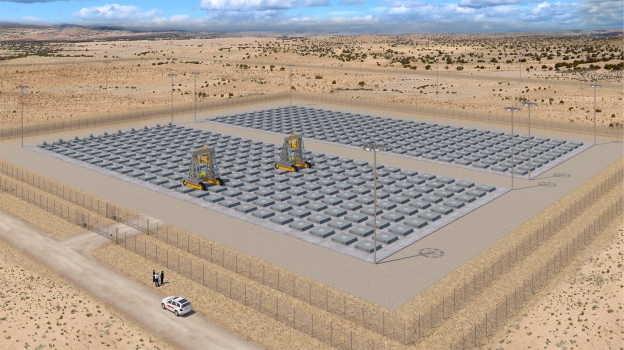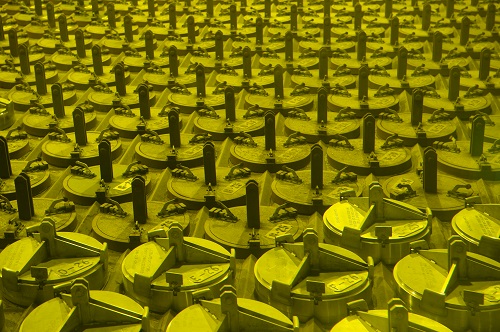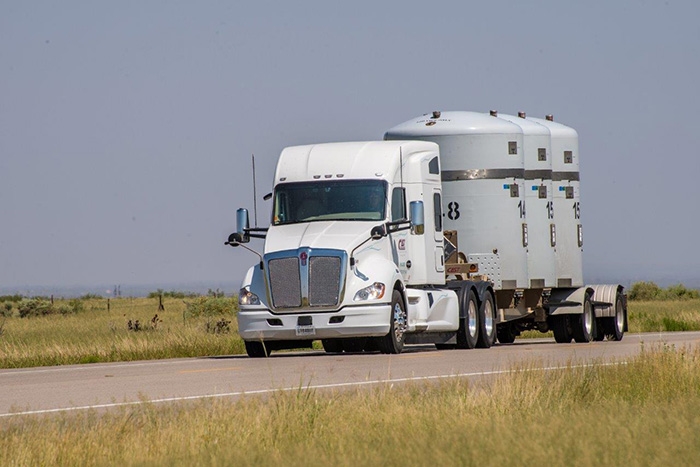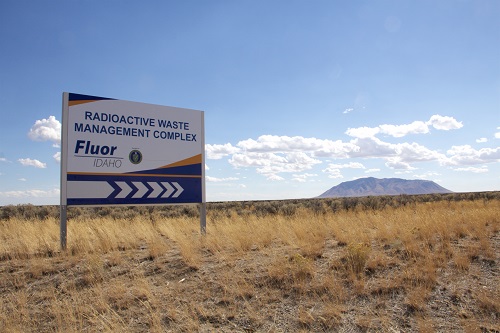A proposal for New Mexico to house one of the world’s largest nuclear waste storage facilities has drawn opposition from nearly every indigenous nation in the state. Nuclear Issues Study Group co-founder and Diné organizer Leona Morgan told state legislators in November 2019 the project, if approved, would perpetuate a legacy of nuclear colonialism against New Mexico’s indigenous communities and people of color.
Holtec International, a private company specializing in spent nuclear fuel storage and management, applied for a license from the federal Nuclear Regulatory Commission to construct and operate the facility in southeastern New Mexico. Holtec’s proposal would see the majority of high-level nuclear waste in the U.S. transported to a consolidated interim storage facility located in southeastern New Mexico. If licensed, the facility would house up to 100,000 metric tons of high-level waste at capacity — more nuclear waste than currently exists in the country — for up to 40 years, while the federal government either re-opens Yucca Mountain or establishes a new deep repository to permanently store the waste.
The proposal, which has been in the works since 2011, would see high-level waste generated at nuclear power plants across the country transported to New Mexico for storage at the proposed facility along the Lea-Eddy county line between Hobbs and Carlsbad. Holtec representatives say the facility would be a temporary solution to the nation’s growing nuclear waste problem, but currently there is no federal plan to build a permanent repository for the waste.
Legislators, activists and residents alike share concerns about the proposals. Some fear the “interim” storage facility could become a de facto permanent storage facility if no other repository is built; others question the site selection for a nuclear facility so close to oil and gas activity in the Permian Basin. Increased transport of high-level radioactive waste across the state could also lead to potentially dangerous nuclear releases, leaving impacted communities responsible for emergency responses.
“New Mexico doesn’t make the waste, why should we take the waste?” Morgan said. “What we’re advocating for is not a temporary, band-aid solution, but something more scientifically sound. The waste does have to go somewhere. However, storing it in New Mexico temporarily is not the right idea. It’s not safe; it’s not supported by the local communities; and New Mexico does not want it.” “We see this as environmental racism and perpetuating nuclear colonialism that is going to result in a continuation of a slow genocide,” she said….
Meanwhile, nuclear power utilities across the country have sued the federal government over a breach of contract for failing to establish a permanent repository for the waste.
Nuclear colonialism, a term first coined by environmentalist Winona LaDuke and activist Ward Churchill, describes a systematic dispossession of indigenous lands, the exploitation of cultural resources, and a history of subjugation and oppression of indigenous peoples by a government to further nuclear production of energy and proliferation of weapons. “All of the impacts from nuclear colonialism can be simplified by explaining it as environmental racism,” Morgan told state legislators last week. She pointed to the health and environmental consequences of uranium mining on the Navajo Nation during the last century. “My family lives in areas where there was past uranium mining. We’re still dealing with the legacy of all of the mining that fuelled World War II and the Cold War,” Morgan said. “This legacy is still unaddressed — not just in New Mexico, but in the entire country. For that reason, my concern is the health of our people, our environment.”
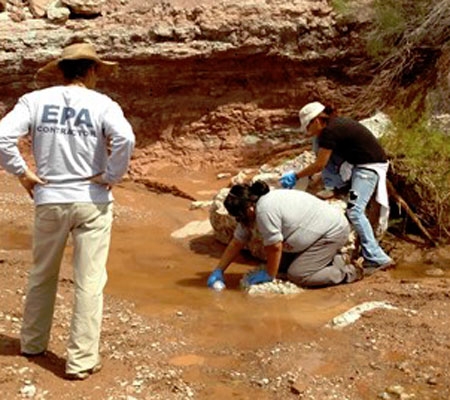
“We do not believe we are separate from the environment,” Morgan said. “We are not here to protect the environment as land and as mountains, but as living, breathing entities.” Similar beliefs, sometimes referred to in policy discussions as “environmental personhood,” have gained recognition among regulators in countries across the world in recent years.
Excerpts from Kendra Chamberlain, Nuclear Colonialism: Indigenous opposition grows against proposal for nation’s largest nuclear storage facility in NM, https://nmpoliticalreport.com/, Nov. 14, 2019
